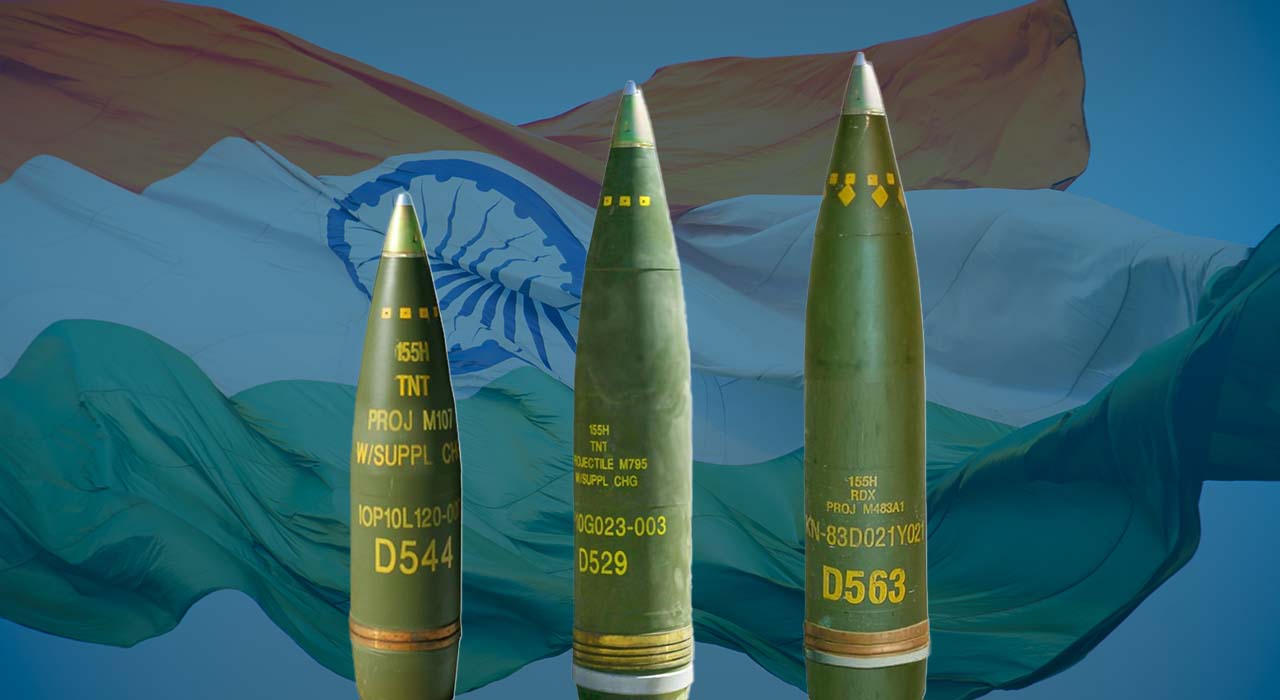4 October, 2024
India has a bilateral agreement with Russia (Russian Oil for Indian Munitions) as does North Korea (North Korean Missiles for Russian Oil), and China (Chinese Cash for Russian Oil), but these are not exclusive agreements that obligate the seller to limit their market. In fact, the seller can sell to whomever they want as long as it does not violate any treaties or trade embargos/agreements, unless the buyer wishes to purchase the seller’s entire capacity. It is a political high wire act that India must balance and tread lightly on.
Artillery shells sold by Indian arms makers have been diverted by European (Italy and Czech Republic) customers to Ukraine and New Delhi has not intervened to stop the trade despite protests from Moscow. The transfer of munitions to support Ukraine's defence against Russia has occurred for more than two years now.
Indian arms export regulations limit the use of weaponry to the declared purchaser, who risks future sales being terminated if unauthorised transfers occur. This means that the supplier has the final say as to who the final beneficiary is due to current global conflicts and political agreements.
India has been carrying out its defence exports taking into account its international obligations on non-proliferation and based on robust legal and regulatory framework, which includes a holistic assessment of relevant criteria, including end user obligations and certifications
In January, India officials told a news conference that India had not sent or sold artillery shells directly to Ukraine. Two Indian government and two defence industry sources stated that Delhi produced only a very small amount of the ammunition being used by Ukraine, with one official estimating that it was under 1% of the total arms imported by Kyiv since the war. The news agency couldn't determine if the munitions were resold or donated to Kyiv by the European customers.
Among the European countries sending Indian munitions to Ukraine are Italy and the Czech Republic, which is leading an initiative to supply Kyiv with artillery shells from outside the European Union. These Indian munitions are being used by Ukraine unbeknownst to India who, upon learning of this, had not taken any action to throttle the supply to Europe YET. If they do then they could be offside with NATO, but if they don’t, they could be offside with Russia. Hmmm the Catch-22 dilemma.
Russia supplied 65% of India's weapons purchases of more than $60 billion during the last two decades, according to the Stockholm International Peace Research Institute, but the Ukraine war hastened the impetus to diversify its weapons base.
But Delhi, long the world's largest weapons importer, also sees the lengthy war in Europe as an opportunity to develop its nascent arms export sector. India exported just over $3 billion of arms between 2018 and 2023, according to data compiled by the Stockholm International Peace Research Institute think-tank.
Defence Minister Rajnath Singh said at a 30 August 2024 conference that defence exports surpassed $2.5 billion in the last fiscal year and that Delhi wanted to increase that to about $6 billion by 2029.
India exported just $2.8 million in munitions components to Italy and the Czech Republic, as well as Spain and Slovenia, where defence contractors have invested heavily in supply chains for Ukraine. Between February 2022 and July 2024, the figure had increased to $135.25 million, the data show, including completed munitions, which India began exporting to the four nations.
Is India turning a blind eye to treaties that limit the resale of munitions because of money?
Does this explain why India has one foot in NATO, and will not commit, and the other foot on commercial exports?
They say that “Money talks”, but who pays the ultimate price in the end?


